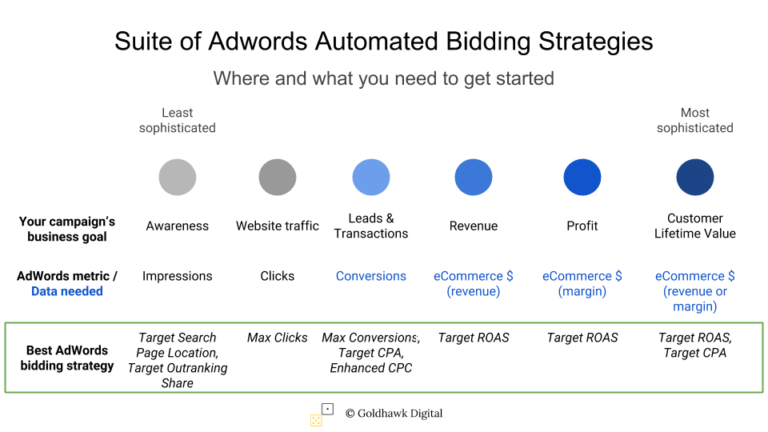This post originally appeared on my LinkedIN profile in June 2018
On a late Winter afternoon in Seoul, South Korea during March 2016 a watershed moment occurred for Artificial Intelligence (AI). The occasion was the third match of a best of five series of the board game Go, between World Champion Lee Sedol and a computer program known as AlphaGo.
AlphaGo had surprised onlookers and taken a 2-0 lead in the series. Game 3 was therefore make or break for Sedol and human vs machine.
Developed by Google’s subsidiary Deepmind, AlphaGo was built using a subsection of Artificial Intelligence known as Machine Learning (ML). ML uses a process of subjecting an algorithm to large sets of data to ‘learn’ by recognising patterns within the data set. AlphaGo developed its prowess by playing both humans and then versions of itself hundreds of thousands of times.
Unfortunately for Sedol all this practice paid off. AlphaGo won game 3, and went on to win the series 4 – 1.
Not as well known outside of Asia as the game of Chess, a Go board has 19×19 squares and a single game has 10175 possible combinations. More than the number of atoms in the Universe. This is why AlphaGo’s victory could be more important in the progress of artificial intelligence than when IBM’s Deep Blue beat Garry Kasparov in their series of Chess matches in 1996.
This event may seem a world away from Search Engine Marketing (SEM). Yet the breakthrough has profound implications for the $100bn a year industry that remains both under appreciated and under utilised.
Why Machine Learning offers a 20% improvement to manual optimisation
Like playing Go, managing paid search accounts also involves a range of interdependent decisions and large combination of variables. Keywords, bids, targeting, budgets and ad copy all need to combine in various combinations across match type, time of day, location, audience and user device.
Until recently the best practice to manage this complexity was to create highly structured and ever more granular AdWords accounts. This is best practice we now need to unlearn.
As the success of AlphaGo shows, Machine Learning has surpassed human ability in many of these areas. It should therefore be used to perform much, if not all of this work. In the process making complex account structures unnecessary, and freeing up time for advertisers to work on higher value tasks.
To employ this technology you need to apply an AdWords Automated Bidding strategy. The strategies are built on the same principles as those leveraged by AlphaGo. This time to make better bidding decisions on your behalf, as opposed to which move to make next.
With the right implementation, a move from manual to automated bidding should yield a 20% or greater improvement in performance – possibly a lot more. This leaves marketers with a desirable dilemma. Would you like more conversions at your current return on investment (ROI), or the same volume at a better ROI!
Just what is Automated Bidding?
Using automated bidding is the practice of letting an algorithm set your bids as opposed to manually entering them. In the case of AdWords it involves selecting a business goal, such as cost per lead or sale (aka CPA Cost Per Acquisition), rather than setting a Maximum Cost Per Click (Max CPC) for a given keyword.
As with AlphaGo, rather than instruct AdWords with a set of fixed rules, you allow it to learn over time what the appropriate bid should be in any given set of conditions to meet your goals.
Example:
Grace sells shoes online and is happy to pay $10 in advertising costs per pair of shoes sold. Grace knows that her AdWords “Shoes” campaigns converts at 10% – ie one sale for every 10 clicks to her site.
If Grace were manually setting bids she would logically set a maximum bid of $1.00 (10% x $10) per click. With Smart-Bidding Grace would set her cost per sale (CPA target) at $10 and leave AdWords to see how many sales it could deliver at this target.
A caveat regarding volume
It is important to stress that AlphaGo achieved its historic victory by playing and improving over hundreds of thousands of games. The same applies to your AdWords account. The more conversion events the bidding strategies observe, the larger the improvement will be. At a minimum your AdWords account needs the potential to deliver 50, and ideally over 100 conversions or goals each month. The graphic below shows what happens to results over time post a successful implementation. You can see that actual performance may fluctuate early on. This is normal, and a key component of a successful transition is to allow the algorithm time to calibrate.
A shift in focus
To summarise, automated bidding not only improves performance, but also removes a lot of time consuming optimisation work. During my time at Google I noticed this second point is currently under appreciated within the industry. It provides a second benefit to marketers in that it allows them time to work on higher value analysis such as customer lifetime value and ad copy testing.
We live in a world where all media will be bought in real-time. Today competitive advantage comes from being the most informed bidder in the auction. An edge can be gained by understanding the value of that moment better than competitors. Investing time and resources to better measure the value of customers is the only way to achieve this.
So where do I start?
Here is a framework we use to implement the best strategy for clients.

We work with clients to move them from left to right across this spectrum. Each step requires improved measurement and understanding of your business’s economics. The effort is worth the reward. Our estimates indicate that less than 20% of advertisers are currently using the two most sophisticated strategies.
Other considerations:
What if I use a Third Party (3P) or non-AdWords bidding platform?
(DoubleClick for Search, Kenshoo, Adobe and Marin etc)
The answer will be unique to each advertiser. The good news is that AdWords and 3P auto-bidding are not mutually exclusive. You can use a 3P for management and reporting, while using AdWords for bidding.
There is no question AdWords algorithms have an edge vs 3P due to the frequency of optimisation (they optimise bids in real-time for each unique search) and the exclusive set of signals available to them that are not passed through the AdWords API to the 3P bidding algorithms (actual search query, browser, OS etc). On the other hand, your 3P may have a more holistic view across channels of your user journey. AdWords currently only looks at the paid search channel.
Our general view is that if Paid Search represents 80% or more of your digital budget, using solely AdWords auto-bidding is your best bet. This will also save you the 3P service costs (which are considerable at up to 5% of media costs). Otherwise if you have significant Display and Social spend, a 3P may be best to provide the cross channel insights needed to allocate your budget appropriately.
Still unsure or have other stakeholders to convince?
The Drafts & Experiments (D&E) feature is a great way to test the uplift of Automated bidding vs your current practice. This tool runs a % off campaign traffic you choose under your current and automated bidding. It then reports all the conversion metrics to let you see the results. It is a great way to have a data led discussion about whether a move to automation is right.
Heartbreaking to a data lover, our experience shows that over 90% of clients had never run a Draft and Experiment to test any component of their account performance!
Appendix: Further details and considerations for practitioners wanting to do-it-yourself.
How each strategy works to achieve its objective
- Target Search Page Location (tSPL) and
- Target Outranking Share (tOS)
Visibility on the Search Results Page (SRP) is the objective of these strategies.
tSPL is used to ensure you appear mostly in the ‘top slots’ on the SRP. It can be a useful strategy when share of voice is your top KPI, say on brand or other critical search terms.
tOS is also focused on showing your ads in a given position, but this time relative to a specific competitor or competitors. Great if you want to ensure prominence over a competitor, say during a sale or other important period for your business.
- Maximise Clicks
This strategy ensures you get the most visits to your site each day from your given budget. It is great for businesses who do not yet have conversion events on their website, and work to fixed monthly budgets.
The good news about these three strategies is that you can implement them pretty much immediately – without the need for any conversion information being passed back to AdWords. This can be useful as you get started or if you do not know what actions on your website have value (something we can help you figure out).
What really gets us excited at Goldhawk, however, is the conversion based ‘Smart Bidding’ sub set. It should be noted that all these strategies require a conversion event that gets passed back to AdWords.
- Enhanced CPC (eCPC).
Enhanced CPC can be a good first step into automated bidding, as it still allows for some control. Adwords ‘enhances’ your maximum CPC bid based upon the conditions it observes at the instant the search takes place.
- Maximise Conversions
Great for newer advertisers who may have a fixed budget or are not sure what their target CPA should be. The strategy delivers the most conversions each day from your given budget.
- tCPA (target Cost Per Acquisition).
Most advertisers who understand their business and customer value will know what they are willing to pay for a transaction or new customer. This amount is used to set your target CPA. Once set, the algorithm seeks to grow the volume of conversions delivered to your website within the bounds of this target. So you judge success not by was the actual cpa less than the target, but rather by how many more conversions did you get vs when you were bidding manually.
- tROAS (target Return on Ad Spend)
tROAS is the most sophisticated strategy in the suite. It seeks not only to maximise the number of conversions you get, but also the value of those conversions. So success with this strategy means greater revenue, at your target return.
tROAS is not only for eCommerce advertisers though. Anyone who has variance in their conversion value can make use of it as long as you can pass the conversion value (say a lead score) back to AdWords via one of methods available. We have used this method successfully with loan and service aggregator businesses by scoring leads and passing the value back to AdWords.

